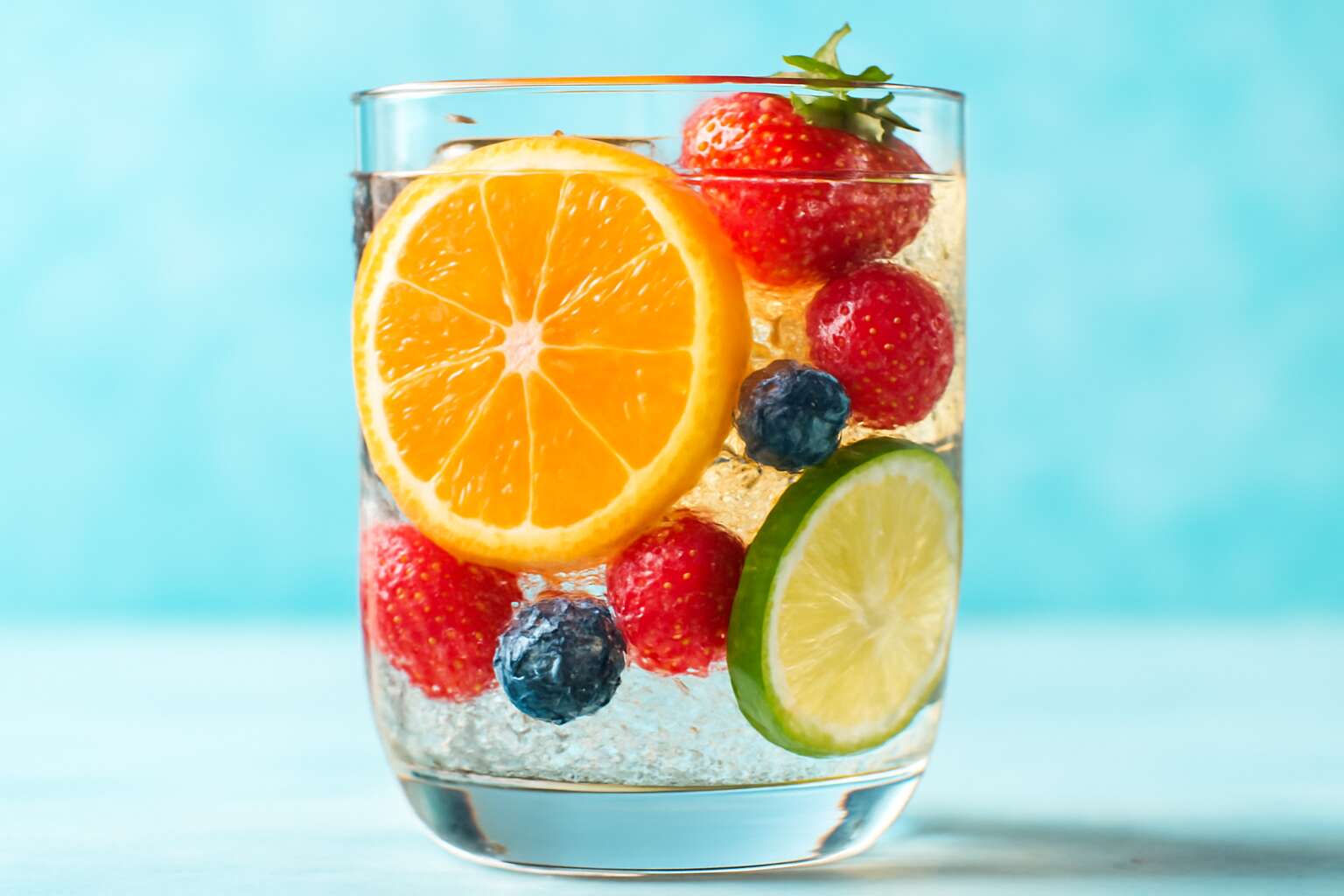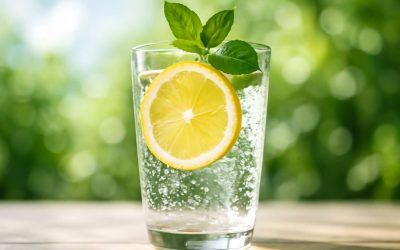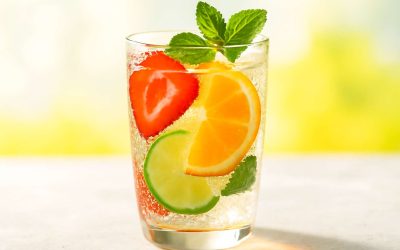Understanding the pH Levels of Flavored Sparkling Water
The Importance of pH in Beverages – How pH affects taste, safety, and quality
Amidst the effervescent allure of flavored sparkling water, the pH level acts as the silent conductor, orchestrating every sip’s symphony of taste and safety. With a delicate balance rooted in acidity, the pH of flavored sparkling water can dramatically influence its flavor profile, transforming a crisp sensation into a tangy twist or a mellow finish. A beverage’s pH is more than a mere number; it is the essence of its character, dictating how it interacts with our senses and our health.
Understanding the pH levels of flavored sparkling water is crucial for both producers and consumers. A pH that strays too far from neutrality can compromise the beverage’s safety, inviting unwanted microbial growth or altering its inherent quality. For those seeking the perfect balance, awareness of the pH in flavored sparkling water ensures that each bubbly contains not only refreshment but also integrity.
- Flavor preservation
- Consumer safety
- Product stability
All hinge upon this subtle yet vital metric, reminding us that in the realm of sparkling waters, harmony is rooted in precise acidity levels.
Typical pH Range of Flavored Sparkling Water – What numbers indicate a balanced beverage
Within the shadowed corridors of beverage craft, the pH of flavored sparkling water emerges as a spectral indicator of balance and purity. Typically, this effervescent nectar resides within a delicate pH range of 3.0 to 4.5, where the liminal space between tartness and mellow serenity is maintained. It is here, in this twilight zone, that flavor and safety coexist in harmonious tension. A beverage’s pH is not merely a numerical whisper but a cryptic signature that influences how the liquid interacts with our senses and our health.
For those who seek the ideal, understanding the typical pH range of flavored sparkling water is crucial. It ensures the beverage’s character remains vibrant and stable, preventing microbial shadows from creeping into the glass. In essence, a flavored sparkling water with a pH closer to 3.5 tends to preserve its crispness and flavor integrity, while avoiding the darker consequences of excessive acidity or alkalinity. The art lies in balancing this spectral measure—ensuring each sip retains its enchanting allure without veering into perilous territory.
Factors Influencing the pH of Sparkling Water – Ingredients, added flavors, carbonation process
The delicate dance of ingredients and craftsmanship in flavored sparkling water is profoundly influenced by its pH level, a subtle yet powerful determinant of its sensory and health attributes. In this realm, the pH of flavored sparkling water is not a static figure but a dynamic spectrum shaped by each element involved in its creation. This spectral measure—often hovering between 3.0 and 4.5—serves as a cryptic signature, revealing much about the beverage’s character and stability.
Several factors influence the pH of flavored sparkling water, each playing a pivotal role in crafting the perfect balance. The choice of ingredients, particularly the natural or artificial flavors, can either elevate or lower the pH, subtly shifting the beverage’s acidity. Additionally, the carbonation process itself acts as a catalyst, introducing carbonic acid that naturally impacts the pH of flavored sparkling water.
- Type of water used
- Type and concentration of flavorings
- Carbonation level
These elements converge, creating a complex interplay that must be carefully managed to maintain the desired pH range.
Health Implications of pH in Flavored Sparkling Water
pH and Dental Health – How acidity impacts tooth enamel
In the enchanting realm of flavored sparkling water, the pH level acts as a silent guardian, subtly influencing both health and harmony. With a pH that skews towards the acidic, the beverage’s sparkle and zest can mask a more sinister effect—an erosion of tooth enamel. Studies reveal that beverages with a lower flavored sparkling water pH tend to be more corrosive, gently chiseling away at the protective layer that shields our teeth from decay. This process, often unnoticed, can lead to increased sensitivity and a higher risk of cavities over time.
It’s a delicate dance—balancing the delightful tang of added flavors with the need to preserve oral health. The acidity, while vital for flavor and carbonation, must be carefully moderated. Too much acidity and the beverage becomes a treacherous potion for dental health; too little, and the sparkle might lack its signature zing. Understanding the role of flavored sparkling water pH can help consumers make informed choices that delight the palate without compromising their radiant smile. Whether sipping in South Africa’s vibrant cities or tranquil coastal towns, awareness of acidity’s impact is essential for maintaining both taste and dental vitality.
pH Balance and Digestive Comfort – Potential effects on digestion and acidity
Within the intricate symphony of our digestive system, the pH balance of flavored sparkling water plays a subtle yet profound role. When consumed, beverages with a markedly low flavored sparkling water pH can tip the scales towards increased acidity, potentially disrupting the delicate equilibrium of gastric fluids. This shift may lead to sensations of heartburn or indigestion, as the stomach struggles to maintain its optimal pH, essential for enzymatic activity and nutrient absorption.
Conversely, a balanced flavored sparkling water pH—typically hovering around neutral—can soothe rather than irritate. It helps preserve the natural acidity of the stomach, fostering a harmonious environment conducive to digestion. For those sensitive to acidity, understanding the nuances of flavored sparkling water pH is crucial, especially when seeking a refreshing beverage that aligns with digestive comfort. After all, the pursuit of hydration should not come at the expense of internal serenity.
- Highly acidic flavored sparkling water, with a low pH, may exacerbate acid reflux symptoms.
- Moderately acidic drinks can enhance palate enjoyment without compromising digestive harmony.
- Choosing beverages with a pH that supports a balanced internal environment can promote overall well-being.
In the vibrant landscapes of South Africa, where the sun’s intensity fuels active lifestyles, being mindful of flavored sparkling water pH becomes more than a mere detail—it transforms into a vital consideration for digestive health and overall vitality. The nuanced interplay of acidity and comfort underscores the importance of selecting beverages that align with both taste preferences and internal harmony.
Suitable pH Levels for Daily Consumption – Guidelines for safe and healthy intake
Amidst the vibrant rhythm of South Africa’s energetic lifestyle, the pH level of flavored sparkling water emerges as a silent guardian of health. A beverage’s suitable pH levels for daily consumption do more than tantalize the taste buds—they safeguard our internal harmony. When choosing flavored sparkling water, understanding its pH range is paramount for maintaining overall vitality. Typically, a balanced flavored sparkling water pH hovers around neutral to slightly acidic, ensuring that your hydration does not come at the expense of your digestive comfort or dental health.
For safe and healthy intake, it’s advisable to select flavored sparkling water with a pH between 6.5 and 7.5. Beverages within this range tend to support a stable internal environment, reducing the risk of acid reflux or enamel erosion. Factors such as added flavors, carbonation, and mineral content can influence the pH, making it essential to read labels carefully. When the flavored sparkling water pH strays too far into acidity, it may contribute to discomfort or dental sensitivity—an unwelcome interruption to life’s pleasures.
How Flavored Additions Affect pH
Natural Fruit Flavors – Impact on beverage pH
The addition of natural fruit flavors to sparkling water is more than just a matter of taste—it’s a delicate dance with pH levels that can shift the beverage’s entire profile. When flavorings like citrus or berry extracts are introduced, they don’t just enhance aroma and appeal; they also influence the flavored sparkling water pH. These natural ingredients tend to be acidic, often lowering the pH and creating a sharper, more invigorating sensation on the palate.
Understanding how flavored additions affect pH is crucial for both manufacturers and consumers. For instance, certain fruit flavors can cause the beverage to dip into more acidic territory, impacting not only taste but also the stability and shelf life of the product. This is where the importance of pH balance becomes evident, especially in crafting a beverage that’s both delicious and safe for daily consumption. The subtle interplay between acidity and flavor intensity can make or break the overall sensory experience of flavored sparkling water.
Artificial Flavors and Sweeteners – Alterations in acidity levels
Artificial flavors and sweeteners are the unseen architects of a beverage’s acidity landscape, subtly yet profoundly altering the flavored sparkling water pH. When these synthetic additions are infused into the effervescent dance of bubbles and fruit, they often tip the delicate balance toward increased acidity. Such shifts can intensify the tang, creating a sharper, more invigorating sensation that awakens the senses or, if unchecked, can disrupt the harmony of the drink’s profile.
In this intricate ballet, the choice of flavoring agents matters. For example, tart cherry or citrus extracts tend to lower the pH, making the beverage more acidic. This acidity not only influences taste but also impacts the stability and shelf life of flavored sparkling water. Understanding these modifications is crucial, as even a slight change in pH can affect everything from carbonation retention to microbial stability.
To visualize the impact, consider this:
- The addition of artificial sweeteners, like aspartame or sucralose, can subtly shift the pH, often making the beverage more acidic.
- Flavor compounds, especially those mimicking citrus or berry, enhance the flavor but also deepen the acidity, which may affect the sensory experience and safety of the product.
Ultimately, the interaction between flavorings—natural or artificial—and the pH of flavored sparkling water forms a complex, ever-changing landscape. It’s an essential puzzle piece in crafting a product that delights the palate while maintaining safety and stability. The nuanced alterations in acidity levels serve as a testament to the artistry behind each sparkling sip, reminding us that in the realm of flavored sparkling water pH, harmony is everything!
Acidulants Used in Flavored Sparkling Water – Common additives and their pH influence
Artificial acidulants play a significant role in shaping the flavored sparkling water pH, often tipping the delicate balance toward increased acidity. These additives, such as citric acid or malic acid, are commonly used to enhance tartness and preserve freshness, but they also lower the pH level, making the beverage more sour and tangy. This shift not only influences taste but can affect the stability and shelf life of the product, emphasizing the importance of careful formulation.
Many flavoring agents, especially citrus or berry extracts, naturally contain acids that further decrease the flavored sparkling water pH. When combined with artificial acidulants, these compounds intensify the overall acidity, which can impact everything from carbonation retention to microbial stability. For example, an overly acidic beverage might lose its fizz quicker or develop microbial growth if the pH drops below a certain threshold.
Some common acidulants and their influence on flavored sparkling water pH include:
- Citric acid — known for its sharp, citrusy taste, it significantly lowers the pH, making drinks more acidic.
- Malic acid — adds a smooth tartness, often used in apple or berry flavors, and also impacts acidity levels.
- Phosphoric acid — frequently found in cola-flavored sparkling waters, it contributes to a more robust acidity.
Understanding how these additives influence the overall pH of flavored sparkling water is vital for manufacturers aiming to balance flavor, safety, and shelf stability. Each acidulant interacts uniquely with other ingredients, creating a complex landscape of acidity that must be carefully navigated to produce a harmonious and safe product.
Measuring and Adjusting pH in Flavored Sparkling Water
Methods to Measure pH – Using pH meters and test strips
Measuring and adjusting the pH of flavored sparkling water is a nuanced dance, one that demands precision and an understanding of both chemistry and sensory perception. As consumers become increasingly discerning, the subtle interplay of acidity and flavor balance becomes paramount. Accurate measurement of flavored sparkling water pH not only ensures safety but also preserves the integrity of the beverage’s taste profile. The most common tools for this task are pH meters and test strips, each offering distinct advantages. pH meters, with their digital accuracy, provide real-time, highly specific readings—essential for meticulous formulation. Meanwhile, test strips serve as a quick, accessible method for routine checks, offering a practical balance between convenience and reliability. When measuring, it’s crucial to calibrate devices regularly using standard buffer solutions, as even slight deviations can lead to misleading results. Adjustments of flavored sparkling water pH involve carefully adding acids or bases, often in small quantities, to fine-tune the acidity, ensuring the beverage remains both palatable and safe for daily consumption. This meticulous process underscores the importance of precision in crafting beverages that delight the palate without compromising health or quality.
Adjusting pH During Production – Techniques used by manufacturers
In the delicate art of crafting flavored sparkling water, controlling the pH becomes an almost philosophical pursuit—an intersection between chemistry and sensory experience. For manufacturers, adjusting the flavored sparkling water pH isn’t merely about maintaining safety; it’s about sculpting a beverage that resonates with the human palate. The process demands precision, where even a slight miscalculation can distort flavor or compromise health standards.
During production, techniques such as titration and the careful addition of acidulants or bases are employed to fine-tune the pH level. Often, manufacturers utilize acidulants like citric acid or malic acid to lower acidity, while alkaline additives are used to elevate pH if needed. An ordered series might involve:
- Measuring the initial flavored sparkling water pH with calibrated pH meters or test strips.
- Adjusting acidity gradually, adding small quantities of acid or base while continuously monitoring pH levels.
- Repeating the measurement process until the desired pH range is achieved, ensuring the beverage remains both flavorful and safe.
This meticulous dance between measurement and adjustment underscores the importance of understanding the beverage’s chemistry. The goal isn’t just technical mastery but creating an experience that delights, sustains, and respects the consumer’s well-being. In a world where taste is subjective yet precision is universal, the mastery of flavored sparkling water pH becomes a silent testament to the artistry behind every bubbly sip.
Home Tips for Consumers – How to assess and maintain pH at home
Maintaining the perfect flavored sparkling water pH at home is both an art and a science—an invisible dance that shapes every bubbly sip. With a few simple tools, you can unlock the secrets to assessing and fine-tuning the pH of your favorite beverages, ensuring they’re both delicious and safe. A reliable pH meter or test strips are your best allies in this quest, revealing whether your sparkling water strikes the ideal balance.
To measure the flavored sparkling water pH, immerse the test strip or calibrate your pH meter, then gently dip or insert it into your beverage. The resulting color change or digital readout will tell you whether your drink is too acidic or too alkaline. If adjustments are necessary, adding small amounts of acidulants like citric acid can lower the pH, while a pinch of baking soda or alkaline mineral water can raise it. Repeat the measurement process after each tweak to approach the desired pH range, typically between 3 and 4 for most flavored sparkling waters.
By embracing this method, home enthusiasts can craft bubbly beverages that not only burst with flavor but also maintain the ideal pH balance—transforming every sip into a delightful experience of harmony and refreshment.
Choosing the Right Flavored Sparkling Water Based on pH
Reading Labels and Product Information – What to look for regarding pH
When selecting flavored sparkling water, understanding its pH level is essential to appreciating its harmony with your body and taste buds. Labels often display pH readings—an indicator of acidity or alkalinity—that can guide you toward a balanced beverage. Words like “natural,” “artificial flavors,” and “acidulants” on product labels are more than marketing—they hint at the beverage’s pH profile. For those seeking a gentle refreshment, a flavored sparkling water pH between 3 and 4 typically offers a crisp, tangy experience without overwhelming acidity.
Consumers should look for transparency in product information, especially regarding pH, to ensure their choice aligns with health and taste preferences. A higher pH (closer to neutral) generally signifies a milder acidity, more suitable for daily consumption. Conversely, beverages with lower pH levels tend to be more tart or sour, which can impact dental health over time. By paying attention to the flavored sparkling water pH and ingredients, you can indulge in your favorite flavors while maintaining a delicate balance that nurtures both well-being and pleasure.
Brands Known for Balanced pH – Popular options with optimal acidity levels
Understanding the delicate balance of flavored sparkling water pH is an essential yet often overlooked aspect of choosing the perfect beverage. A product with a well-calibrated pH not only ensures a harmonious taste but also aligns with your health’s silent demands. For those seeking a beverage that delights without disrupting your body’s natural equilibrium, brands known for balanced pH levels are worth exploring. These brands tend to maintain a pH that hovers between 3 and 4, providing a crisp, tangy experience that’s gentle on the teeth and digestion.
Popular options in South Africa include sparkling water brands that prioritize ingredient transparency and pH stability. Naturally flavored options often feature a pH that stays within the ideal range, thanks to the use of natural fruit extracts and minimal additives. Conversely, some artificial flavors and sweeteners can skew the flavored sparkling water pH towards higher acidity, emphasizing the importance of reading labels carefully. When selecting your sparkling water, seek out products that clearly state their pH and ingredient profile, ensuring your choice nurtures both taste and well-being.
Tips for Selecting pH-Friendly Flavored Water – Consumer advice for health-conscious choices
Choosing the right flavored sparkling water pH isn’t just about avoiding a tangy disaster; it’s about aligning your beverage choices with your body’s delicate harmony. With many brands boasting vibrant flavors, it’s easy to get seduced by the zing without considering whether the pH level is whispering “gentle” or shouting “acid attack.” Naturally, a balanced flavored sparkling water pH hovers between 3 and 4, ensuring a crisp, refreshing experience that’s kind to your teeth and digestion.
For health-conscious consumers, reading the label is the first step. Look for products that clearly state their flavored sparkling water pH and ingredient profile. Brands that prioritize ingredient transparency often maintain a favorable pH, thanks to natural fruit extracts and minimal additives. Conversely, artificial flavors and sweeteners can sometimes tip the acidity scales, making your sparkling water more aggressive than it needs to be.
- Check the pH value on the label – aim for that sweet spot between 3 and 4.
- Scan ingredients for natural fruit extracts, which tend to support a more balanced pH.
- Be wary of added sugars and artificial flavors that might skew acidity higher.
Ultimately, selecting a flavored sparkling water with a friendly pH isn’t just about taste; it’s about nurturing your well-being while enjoying a bubbly escape from ordinary hydration. Your teeth and digestion will thank you for it!
Future Trends and Innovations in Flavored Sparkling Water pH
Natural pH Adjustments – Innovations in using natural ingredients
As the landscape of beverage innovation continues to evolve, the spotlight on natural pH adjustments in flavored sparkling water becomes increasingly critical. The future of this industry hinges on harnessing sustainable, organic ingredients to fine-tune the pH levels, ensuring consumers enjoy a product that balances tartness, safety, and health benefits seamlessly. This movement toward natural pH regulation is driven by a desire to reduce reliance on artificial acidulants and instead, utilize ingredients like organic citrus extracts, herbal infusions, and botanical acids that not only elevate flavor but also support digestive harmony.
Innovators are exploring cutting-edge techniques such as microencapsulation and fermentation to modulate pH naturally during production. These advancements allow for more precise control without compromising the beverage’s integrity or taste profile. Furthermore, the shift toward transparency has encouraged brands to prominently feature natural ingredients that influence the flavored sparkling water pH, fostering trust among health-conscious consumers. As this trend gains momentum, expect to see a broader array of products that prioritize natural pH adjustments, aligning health, flavor, and sustainability in a harmonious symphony.
Low-Acidity Options – Development of gentler flavored sparkling waters
As the palate becomes increasingly discerning, the future of flavored sparkling water ph is poised for a gentle revolution. Consumers are no longer content with aggressive acidity; instead, they crave low-acidity options that boast a refined, harmonious balance of flavor and safety. This shift underscores a broader industry movement toward creating beverages with natural pH levels that cater to health-conscious individuals seeking both refreshment and wellness.
Innovators are pioneering techniques such as microencapsulation of botanical acids and fermentation-based adjustments, which allow for the development of gentler flavored sparkling water ph profiles. These methods preserve the integrity of natural ingredients while subtly modulating acidity, resulting in beverages that are easier on the teeth and digestive system. Furthermore, brands are exploring organic citrus extracts and herbal infusions, naturally lowering the acidity without sacrificing zest or vibrancy.
- Emphasis on transparency about natural ingredients influencing the flavored sparkling water pH
- Enhanced focus on sustainability and organic sourcing to meet consumer demand
- Broader availability of low-acidity options that cater to sensitive palates and health needs
As this trend accelerates, expect to find more products designed with the delicate art of pH balancing at their core—delivering a sophisticated, health-forward experience that resonates with modern consumers. After all, in a world obsessed with authenticity and wellness, the quest for a perfect flavored sparkling water pH is more than just a scientific endeavor; it’s a cultural shift towards mindful indulgence.
Technological Advances in pH Monitoring – Emerging tools and techniques in beverage production
As the demand for health-conscious beverages intensifies, technological innovation in monitoring flavored sparkling water pH is transforming the industry. Cutting-edge tools promise unprecedented precision, allowing manufacturers to fine-tune acidity levels with remarkable accuracy. This evolution is not merely about scientific curiosity; it’s about delivering a product that aligns perfectly with consumer expectations for natural, balanced flavors and wellness.
Emerging techniques such as real-time pH sensors integrated into production lines enable continuous adjustments, reducing waste and ensuring consistency. Advanced digital pH meters, equipped with seamless data logging and calibration features, facilitate meticulous control over the beverage’s acidity profile. These innovations empower producers to craft flavored sparkling water pH profiles that are gentle yet vibrant, meeting the rising standards for low-acidity options.
In addition, some manufacturers are exploring microfluidic-based pH monitoring systems. These miniature devices provide rapid, on-the-spot measurements, making it easier to uphold optimal pH levels during each stage of production. The integration of such technologies underscores a broader movement towards transparency and precision, ultimately delivering healthier, more refined sparkling waters.
- Real-time pH sensors for continuous monitoring
- High-precision digital pH meters with data logging
- Microfluidic devices for rapid pH assessment
Innovation in pH monitoring is opening new frontiers, allowing brands to push the boundaries of flavor harmony while prioritizing consumer safety. As this technology advances, the future of flavored sparkling water pH looks not only more sophisticated but also more attuned to the subtle nuances that define a truly balanced beverage. This marriage of science and artistry ensures that every sip offers a harmonious blend of taste, wellness, and authenticity—an essential ingredient in the evolving landscape of sparkling waters worldwide.




0 Comments